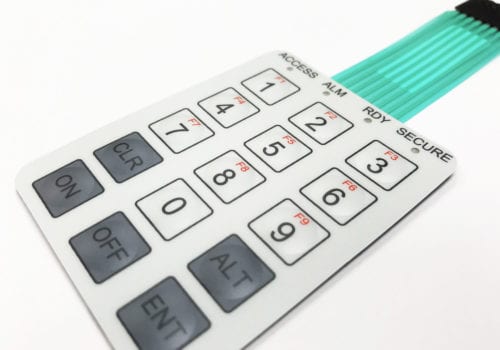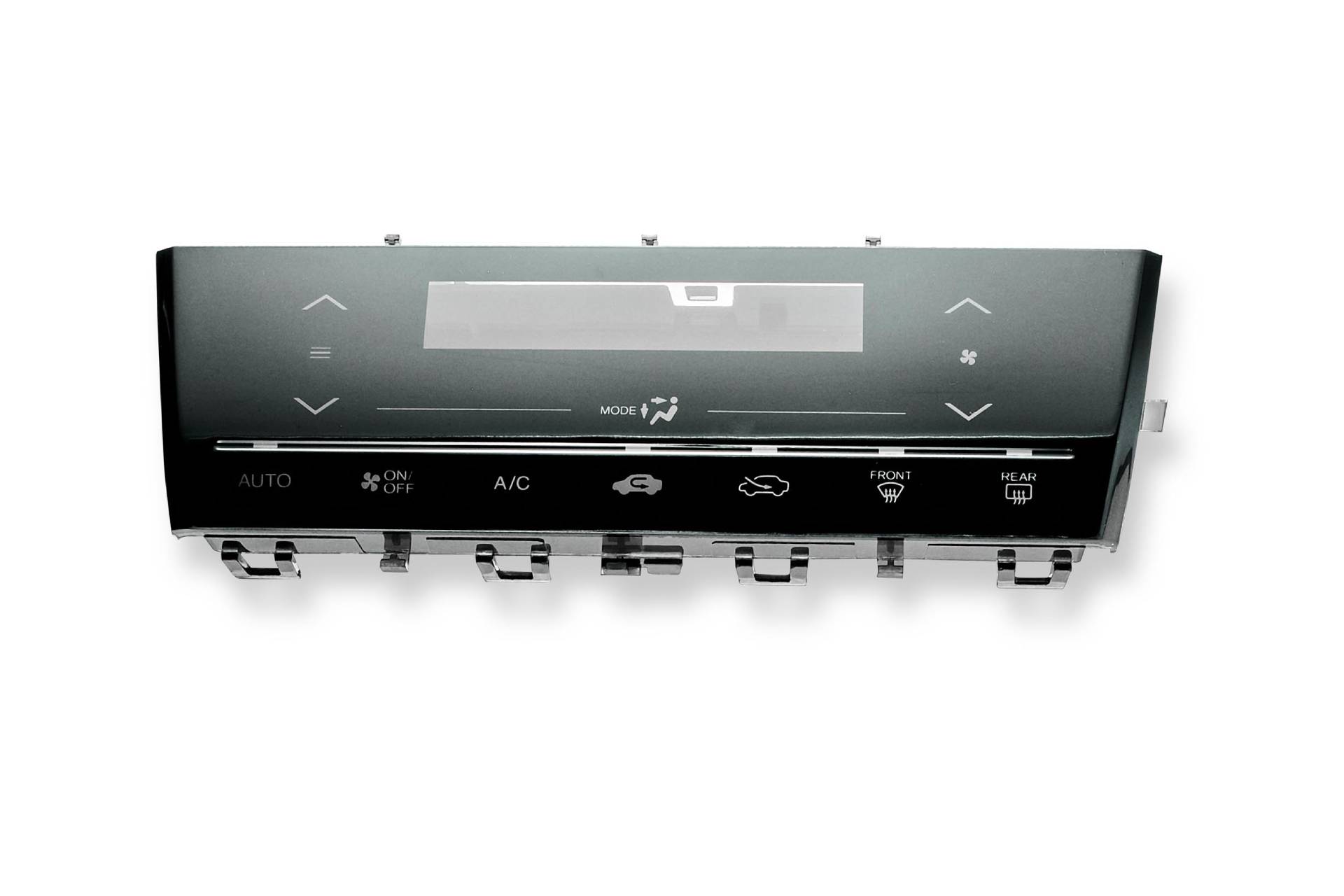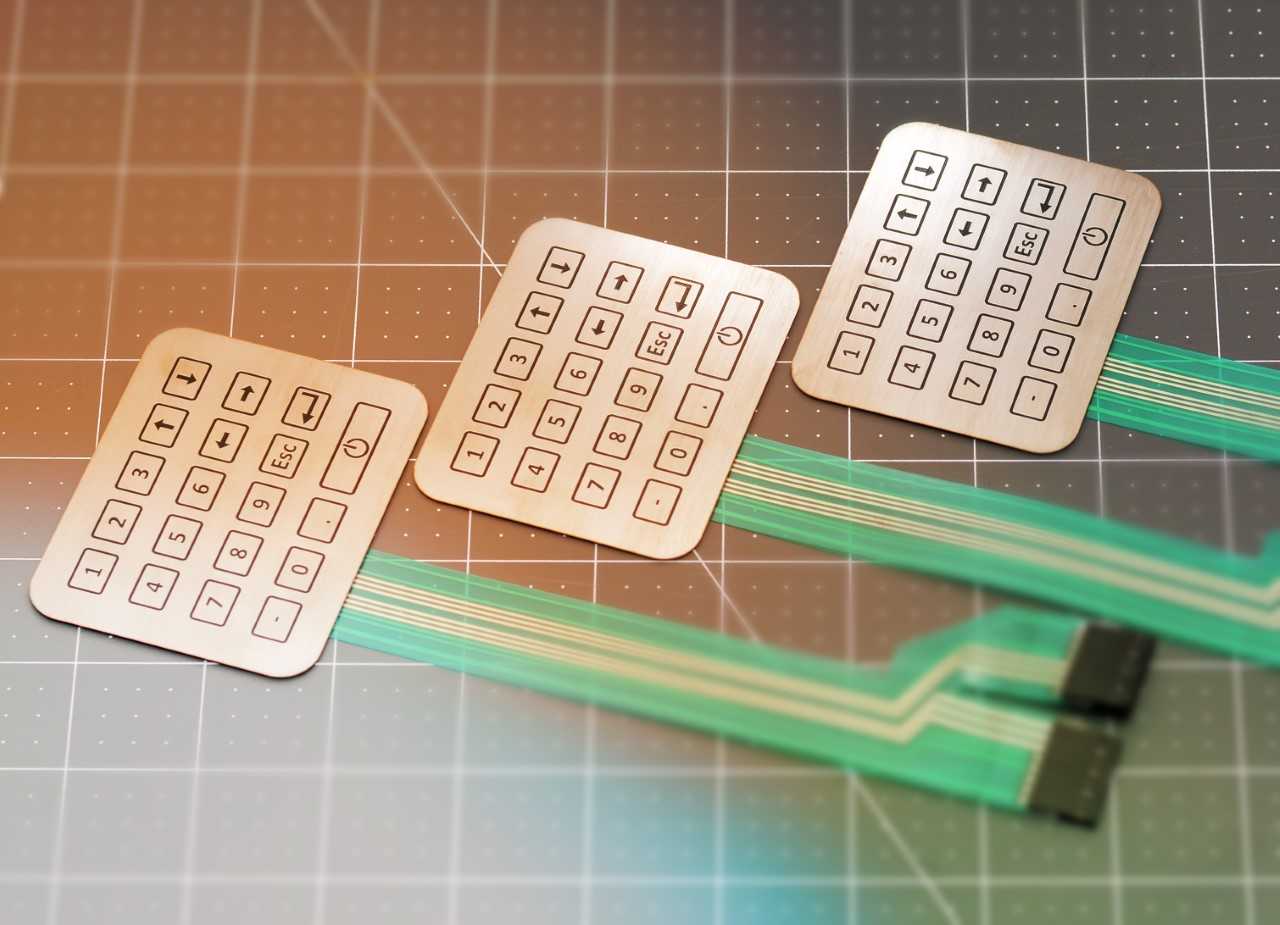Discovering the Manufacturing Process of Membrane Switch for Various Industries
The manufacturing process of Membrane buttons is a complicated endeavor that requires accuracy and interest to information. From selecting ideal materials to implementing rigorous top quality control actions, each step plays an important function in making certain functionality. Various sectors, including automobile and medical, rely upon these parts for their distinct applications. Recognizing the complexities of this procedure reveals substantial understandings into how these switches are created and their impact across diverse sectors.
Comprehending Membrane Switches Over: An Overview

Trick Materials Utilized in Membrane Switch Manufacturing
In Membrane switch manufacturing, the choice of key products substantially influences capability and longevity. Conductive products, adhesives, and coatings play vital duties, while substrate option influences overall performance and integrity. Understanding these components is essential for enhancing the style and manufacturing of Membrane buttons.
Conductive Products Review
Conductive products play an important duty in the capability of Membrane buttons, ensuring trusted electric links within the tool. Frequently used materials consist of silver, copper, and carbon-based inks, each offering distinct advantages. Silver is favored for its high conductivity and longevity, making it excellent for applications calling for durable efficiency. Copper, while slightly much less conductive than silver, is a cost-effective option often utilized in published circuits. Carbon-based inks provide a functional option, ideal for applications where adaptability and reduced prices are prioritized, although they have actually reduced conductivity contrasted to steel choices. The option of conductive materials directly influences the overall dependability, lifespan, and performance of the Membrane switch, making it an essential factor to consider in the production process.
Adhesives and Coatings
Finishings and adhesives are necessary parts in the production of Membrane buttons, providing important bonding and protective buildings. These products assure that various layers of the button, including visuals overlays and wiring, adhere firmly to one another, enhancing durability and functionality. Generally utilized adhesives include pressure-sensitive adhesives (PSAs) and epoxy-based formulas, which provide solid adhesion and resilience. Coatings, such as polyurethane or acrylic, offer to shield against ecological factors, consisting of wetness, abrasion, and chemicals. Furthermore, coverings can improve tactile comments and visual charm, adding to the general user experience. The selection of ideal adhesives and finishings is vital for maximizing performance and longevity in varied applications across different markets, ensuring that Membrane switches over fulfill specific operational demands.
Substrate Choice Factors
Substrate option plays a crucial function in the production of Membrane buttons, as it greatly affects their general performance and toughness. Key products such as polyester, polycarbonate, and adaptable published circuit boards (FPCBs) are frequently utilized for their distinctive properties. Polyester is preferred for its cost-effectiveness and resistance to abrasion, making it ideal for applications with high wear. Polycarbonate offers premium clearness and effect resistance, suitable for environments requiring high visibility. FPCBs give improved flexibility and are commonly used in complicated layouts. The choice of substrate additionally affects aspects like thermal security, chemical resistance, and simplicity of printing. Eventually, choosing the proper substratum is important for ensuring the performance and durability of Membrane changes throughout numerous sectors.
The Style Process of Membrane Switches
The design process of Membrane buttons is an important phase that substantially influences the performance and visual appeals of the end product - membrane switch manufacturer. It starts with defining the details demands of the application, consisting of measurements, switch format, and tactile comments choices. Designers must consider user communication, making certain that the button is instinctive and accessible.Next, materials are chosen based upon longevity, adaptability, and ecological resistance. The combination of graphics and branding aspects is also necessary, as it enhances aesthetic allure and interaction. Prototyping enables iterative screening, enabling changes based on user feedback and efficiency evaluations.Additionally, the style has to account for the electrical components, such as adapters and circuits, making certain integrity and convenience of usage. Inevitably, a successful style integrates capability, appearances, and user experience, leading the method for efficient manufacturing and lasting efficiency in numerous sectors
Printing Strategies for Membrane Changes
The printing techniques made use of in Membrane switch manufacturing play an important role in figuring out the end product's top quality and performance. Display printing provides benefits such as toughness and vibrant color application, while electronic printing technologies offer flexibility and accuracy in layout. Recognizing these approaches can greatly influence the overall performance of Membrane buttons in numerous applications.
Screen Printing Benefits
Countless advantages make screen publishing a preferred method for producing Membrane buttons. This approach allows for top notch, detailed designs and vibrant colors, which are necessary for interface applications. Display printing is especially reliable for using thick ink layers, enhancing sturdiness and responsive comments. Additionally, it uses exceptional bond to different substratums, ensuring longevity sought after environments. The procedure is cost-efficient for huge manufacturing runs, as it decreases setup time and waste. Screen printing sustains a broad range of inks, consisting of specialized and UV-curable choices, enabling convenience in layout. Its ability to create constant outcomes throughout several systems makes it a reputable choice for manufacturers intending for quality and performance in Membrane button manufacturing.
Digital Printing Innovations

Improvements in digital printing technology are changing the manufacturing of Membrane buttons, offering suppliers ingenious remedies that boost design versatility and effectiveness. Digital printing enables high-resolution graphics and detailed styles, making it possible for custom-made branding and functionality without the limitations of typical techniques. This method minimizes setup times and expenses, facilitating shorter manufacturing runs and very little waste, making it perfect for organizations with varying demands. Additionally, improvements in ink solutions provide much better sturdiness and bond, making certain longevity in different environments. As sectors significantly seek complicated and individualized layouts, electronic printing stands apart as a vital strategy, setting a new requirement in Membrane button production. The combination of these innovations placements producers to satisfy advancing market needs effectively.
Assembly and Layering of Membrane Switch Elements
Mindful assembly and layering of Membrane switch elements are important to ensuring performance and longevity. This procedure starts with the precise placement of various layers, including the graphic overlay, sticky, circuit layer, and backing material. Each element should be very carefully positioned to maintain electric honesty and user interface responsiveness.During assembly, conductive traces are put on the circuit layer, usually made from materials like polyester or polycarbonate. This layer is essential, as it beams when stress is applied. The adhesive utilized for bonding these layers is also picked for its capability to endure environmental stress and anxieties while preserving a protected bond.Heat and pressure are commonly applied throughout the setting up process to determine that the layers adhere effectively without compromising the functionality of the button. Focus is given to the edge securing to safeguard against wetness and contaminants, securing the long life of the Membrane switch in various industrial applications.
Top Quality Control Procedures in Membrane Switch Manufacturing
Quality control measures play a vital role in making sure the reliability and efficiency of Membrane changes following the assembly and layering of their elements. In the production process, numerous vital assessments are conducted to promote quality requirements. These consist of visual examinations for problems in printing and sticky application, along with functional examinations to verify the responsiveness of each switch.Additionally, environmental screening is executed to assess the buttons' resilience versus temperature level fluctuations and humidity direct exposure. Manufacturers commonly apply learn this here now analytical process control (copyright) strategies to check production uniformity, allowing early detection of anomalies.Furthermore, traceability systems are developed to track materials and elements, making certain accountability and helping with remembers if required. Calibration of tools and adherence to industry standards are also crucial to keeping item honesty. Jointly, these quality control measures protect the performance of Membrane switches across different applications, eventually improving client contentment.
Applications of Membrane Switches Over Across Different Industries
Membrane buttons are made use of across a varied selection of sectors, showcasing their convenience and flexibility. In the clinical industry, they offer trustworthy and water resistant user interfaces for gadgets such as analysis tools and mixture pumps, making certain hygiene and ease of usage. The vehicle market uses Membrane buttons for control panel controls, enabling seamless interaction in between the chauffeur and automobile systems.In customer electronics, these buttons are located in appliances and portable tools, supplying a smooth, modern visual while enhancing performance. Industrial applications also utilize Membrane switches over for machinery control board, where toughness and resistance to severe conditions are essential.Furthermore, the aerospace and protection industries utilize Membrane switches for cockpit instrumentation and communication systems, prioritizing integrity and performance under severe problems. Overall, Membrane buttons play a crucial function in enhancing the customer experience and functional performance across different domain names.
Frequently Asked Inquiries
The length of time Does It Require To Manufacture a Membrane Switch?
The production time for a membrane switch usually ranges from a couple of days to a number of weeks - membrane switch manufacturer. Elements affecting this duration consist of design complexity, material availability, and production quantity, all affecting the total timeline noticeably
What Is the Common Life-span of a Membrane Switch?
The regular life expectancy of a membrane button typically varies from 1 to 5 million actuations, depending upon aspects such as worldly quality, environmental conditions, and use frequency, greatly influencing resilience and overall efficiency.
Can Membrane Changes Be Customized for Details Applications?
Membrane buttons can certainly be personalized for particular applications. Their design versatility permits modifications in size, shape, shades, and graphics, making certain compatibility with visit special requirements across various markets and enhancing performance and individual experience.

Are Membrane Switches Over Eco-friendly?
The environmental effect of Membrane switches over differs. Some materials made use of may not be environmentally friendly, while advancements in making procedures are progressively focusing on sustainability, intending to decrease waste and promote recyclable elements in their manufacturing.
What Are the Usual Failing Settings of Membrane Buttons?
Typical failure modes of Membrane buttons include delamination, sticky failure, damage from use, moisture ingress, and electric failings. These problems can substantially influence functionality, efficiency, and life expectancy in different applications throughout different industries. Membrane buttons can be personalized to fit details style requirements, such as capability, form, and dimension, making them highly adaptable.The building normally involves several layers, including a visuals overlay, adhesive, and a circuit layer, which work with each other to create a seamless user experience. In Membrane button production, the option of key products significantly influences performance and resilience. The auto sector utilizes Membrane buttons for dashboard controls, enabling smooth communication between the vehicle driver and car systems.In consumer electronics, these buttons are discovered in devices and portable devices, offering a streamlined, modern-day visual while improving functionality. Industrial applications additionally utilize Membrane switches for machinery control panels, where toughness and this hyperlink resistance to harsh conditions are essential.Furthermore, the aerospace and protection fields make use of Membrane switches for cabin instrumentation and interaction systems, focusing on dependability and performance under extreme problems. Membrane buttons can indeed be customized for certain applications.
 Angus T. Jones Then & Now!
Angus T. Jones Then & Now! Judd Nelson Then & Now!
Judd Nelson Then & Now! James Van Der Beek Then & Now!
James Van Der Beek Then & Now! Suri Cruise Then & Now!
Suri Cruise Then & Now! Morgan Fairchild Then & Now!
Morgan Fairchild Then & Now!